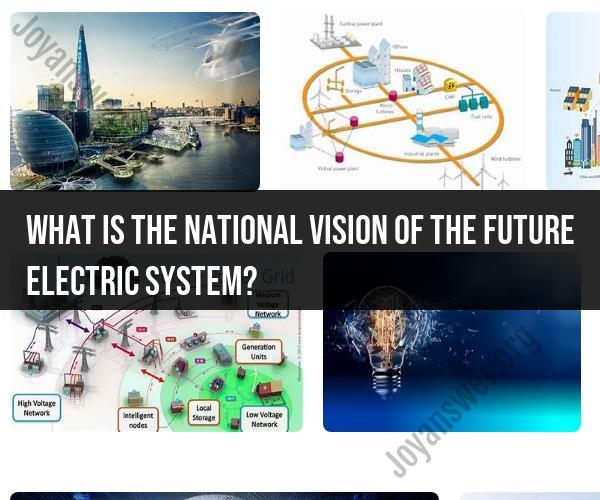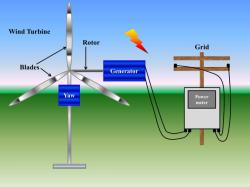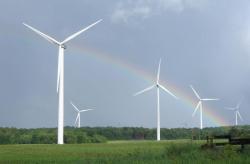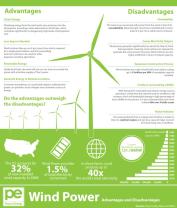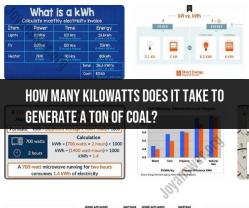What is the national vision of the future electric system?
The national vision of the future electric system refers to a strategic plan and set of goals for the development, modernization, and transformation of a country's electrical infrastructure. This vision is typically shaped by government agencies, regulatory bodies, and industry stakeholders to ensure that the electric system meets evolving needs, advances technology, enhances reliability, and addresses environmental and sustainability challenges. While specific national visions can vary from country to country, some common goals and themes often include:
Grid Modernization: Upgrading and modernizing the electrical grid infrastructure to make it more resilient, reliable, and adaptable to new technologies. This may include the integration of smart grid technologies, such as advanced metering, distribution automation, and grid analytics.
Renewable Energy Integration: Increasing the share of renewable energy sources (e.g., wind, solar, hydroelectric) in the energy mix to reduce carbon emissions, combat climate change, and promote sustainable energy generation.
Energy Efficiency: Implementing measures to improve energy efficiency across the electric system, from power generation and transmission to end-use consumption, to reduce energy waste and lower costs.
Decentralization: Encouraging the development of distributed energy resources (DERs), including rooftop solar panels, energy storage systems, and microgrids, to promote energy independence and resilience.
Electrification: Promoting the electrification of sectors like transportation and heating to reduce reliance on fossil fuels and enable a cleaner and more integrated energy system.
Cybersecurity: Enhancing cybersecurity measures to protect the electric grid from cyber threats and ensure the reliability and security of critical infrastructure.
Grid Resilience: Strengthening the electric grid's ability to withstand and recover from extreme weather events, natural disasters, and other disruptions.
Customer Empowerment: Empowering consumers with more control over their energy usage through advanced technologies, real-time data, and demand response programs.
Environmental Sustainability: Reducing the environmental impact of the electric system, including minimizing air and water pollution, conserving natural resources, and protecting ecosystems.
Economic Competitiveness: Ensuring that the electric system supports economic growth, job creation, and innovation in the energy sector.
Equity and Inclusion: Ensuring that all communities, including underserved and vulnerable populations, have access to reliable, affordable, and clean energy resources.
Regulatory and Policy Framework: Establishing clear and effective regulatory and policy frameworks to support the transition to a more advanced and sustainable electric system.
These goals and visions may vary from one country to another based on their unique energy resources, environmental challenges, policy priorities, and technological capabilities. The national vision of the future electric system serves as a roadmap for policymakers, utilities, and stakeholders to work together toward a more efficient, sustainable, and resilient energy future.
Unveiling the National Vision for the Future of the Electric System
The Biden administration has unveiled a national vision for the future of the electric system, which calls for a clean, resilient, and affordable energy future. The vision includes a number of goals and initiatives, including:
- Deploying 100% clean electricity by 2035. This would require a significant increase in the use of renewable energy sources, such as solar and wind power.
- Making the electric grid more resilient to extreme weather events. This would involve investing in new technologies and infrastructure that can withstand storms, floods, and other disasters.
- Making electricity more affordable for all Americans. This would involve reducing costs for consumers and businesses, and expanding access to affordable energy services.
Transforming the Energy Landscape: Goals and Initiatives in the Future Electric System
The goals and initiatives outlined in the national vision for the future of the electric system will transform the energy landscape in a number of ways. For example:
- The transition to clean energy will create millions of new jobs. The construction and operation of renewable energy projects, as well as the development of new technologies for a clean grid, will require a significant workforce.
- The grid will become more decentralized. As more and more people generate their own electricity from solar panels and other renewable sources, the grid will become less reliant on large centralized power plants.
- The grid will become more intelligent. New technologies, such as smart meters and artificial intelligence, will be used to improve the efficiency and reliability of the grid.
Sustainability and Innovation: A Glimpse into the Future of Electrical Infrastructure
The future of electrical infrastructure will be characterized by sustainability and innovation. New technologies will be used to create a cleaner, more resilient, and more affordable electric system.
Some of the specific technologies that are being developed for the future electric system include:
- Distributed energy resources (DERs): DERs are small-scale energy sources, such as solar panels and batteries, that can be installed at homes and businesses. DERs can help to reduce reliance on the centralized grid and improve energy efficiency.
- Smart grids: Smart grids use digital technologies to monitor and control the electric grid. Smart grids can help to improve efficiency, reliability, and security.
- Renewable energy integration technologies: These technologies are used to integrate renewable energy sources, such as solar and wind power, into the grid. This is necessary because renewable energy sources are intermittent, meaning that they do not always produce electricity at the same rate.
- Energy storage technologies: Energy storage technologies, such as batteries, can be used to store electricity from renewable sources and make it available when needed.
The future electric system will be a complex and interconnected system that uses a variety of technologies to meet the needs of consumers and businesses. The goals and initiatives outlined in the national vision for the future of the electric system will help to create a clean, resilient, and affordable energy future for all Americans.
